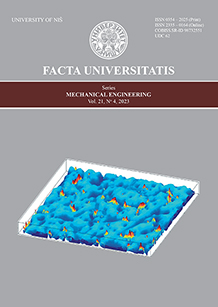MULTI-CRITERIA SELECTION OF STANDARDS FOR SYSTEM ANALYST ACTIVITIES IN ORGANIZATIONS
IF 11.8
2区 工程技术
Q1 ENGINEERING, MECHANICAL
引用次数: 4
Abstract
The paper defines the methodology for the selection of standards and tools that system analysts use for the purposes of analyzing the computer infrastructure of organizations. The goal of system analyst analysis is primarily to increase: the speed of processing information, the efficiency of data processing and data exchange. A large number of standards and tools complicates an adequate choice, and on the other hand system analysts are not the only ones who influence the choice. In the analysis of the choice of standards and tools, in the second chapter an algorithm for determining the weight coefficients for the criteria selected by the company and the ranking of the standards for selection is presented through an example. In order to choose the best standard, the choice was made between four standards described in the third chapter. The chapter defines the criteria that cover IT activities for the selection of standards according to selected criteria and defined weight coefficients in the observed company. Finally, on the assumption that the company together with the analyst chose “k” criteria, where the methodology (LBWA) for the selection of weight coefficients for the criteria was proposed, a new model for calculating the ranking of standards was presented, i.e. the choice of the best. The conclusion of the paper is that the presented procedure for choosing standards is not complicated, that it is very successful, and that in this way the proposals were more easily accepted and implemented in the fastest way.组织中系统分析活动的多准则选择标准
本文定义了系统分析员为分析组织的计算机基础设施而使用的标准和工具的选择方法。系统分析员分析的目标主要是提高处理信息的速度、数据处理和数据交换的效率。大量的标准和工具使适当的选择变得复杂,另一方面,系统分析人员并不是唯一影响选择的人。在标准和工具的选择分析中,第二章通过实例给出了确定企业选择的标准权重系数和选择标准排序的算法。为了选择最好的标准,在第三章中描述的四个标准之间进行选择。本章定义了覆盖IT活动的标准,根据所选标准和所观察公司中定义的权重系数来选择标准。最后,假设公司与分析师一起选择了“k”标准,其中提出了选择标准权重系数的方法(LBWA),提出了计算标准排名的新模型,即选择最佳。本文的结论是,所提出的选择标准的程序并不复杂,它是非常成功的,通过这种方式,建议更容易被接受并以最快的方式实施。
本文章由计算机程序翻译,如有差异,请以英文原文为准。
求助全文
约1分钟内获得全文
求助全文
来源期刊

Facta Universitatis-Series Mechanical Engineering
ENGINEERING, MECHANICAL-
CiteScore
14.40
自引率
2.50%
发文量
12
审稿时长
6 weeks
期刊介绍:
Facta Universitatis, Series: Mechanical Engineering (FU Mech Eng) is an open-access, peer-reviewed international journal published by the University of Niš in the Republic of Serbia. It publishes high-quality, refereed papers three times a year, encompassing original theoretical and/or practice-oriented research as well as extended versions of previously published conference papers. The journal's scope covers the entire spectrum of Mechanical Engineering. Papers undergo rigorous peer review to ensure originality, relevance, and readability, maintaining high publication standards while offering a timely, comprehensive, and balanced review process.
 求助内容:
求助内容: 应助结果提醒方式:
应助结果提醒方式:


